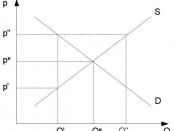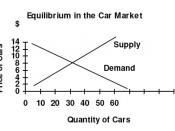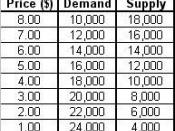According to Colander (2004), Economics is defined as the study of the steps of the production of products, how they are distributed for selling to the public and how the public responds to buying the product. A more simple definition is the study of the way in which goods and services are produced and distributed, and income generated and allocated.
MicroeconomicsAccording to Colander (2004), Microeconomics is defined as the study of the behaviour of individual economic actors, firms, workers, consumers, investors. Microeconomics focuses on the individual decisions that make up demand and supply curves. This gives certain assumptions about rational behaviour and market efficiency and how consumers express their preferences and producers make decisions about what and how to produce. For example, microeconomics considers the choice a person might face as between working time and leisure time, between the purchase of one food product and another, or between different types of products.
All this is from the point of view of the individual worker/consumer. Microeconomics is also concerned with explaining the decisions of firms, again given certain assumptions about rationality and markets, about what to produce, how much to produce and how much to charge.
Law of supplyLaw of supply defined- if demand is held constant, an increase in supply leads to a decreased price, while a decrease in supply leads to an increased price. A microeconomic law stating that, all other factors being equal, as the price of a good or service increases, the quantity of goods or services offered by suppliers increases, and vice versa.
Law of demandLaw of demand defined- if supply is held constant, an increase in demand leads to an increased market price, while a decrease in demand leads to a decreased market price.
Factors that Cause a Change in SupplyResource Prices- an increase...


